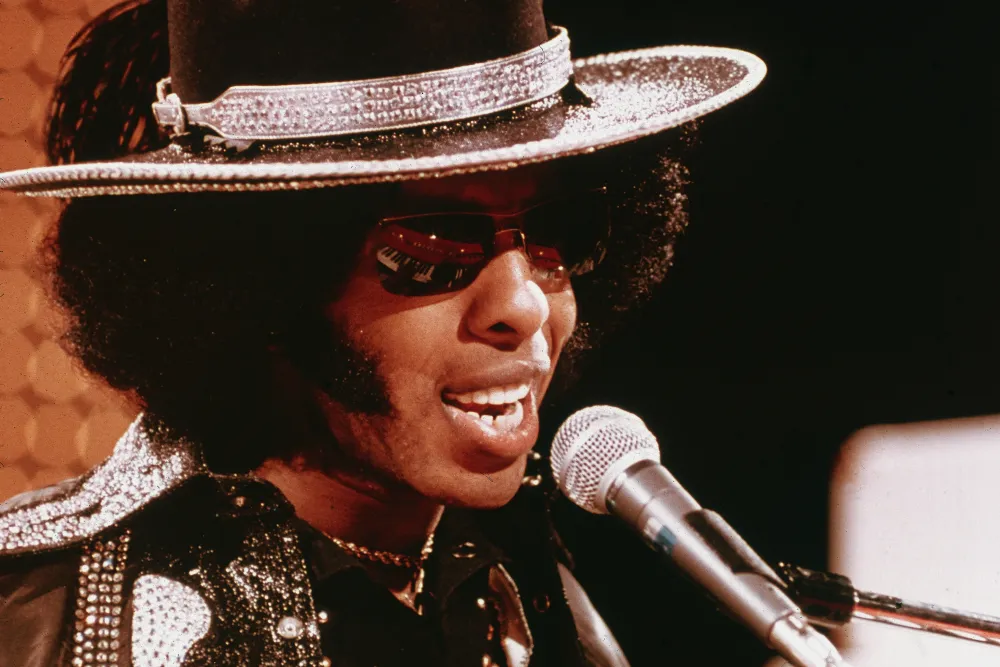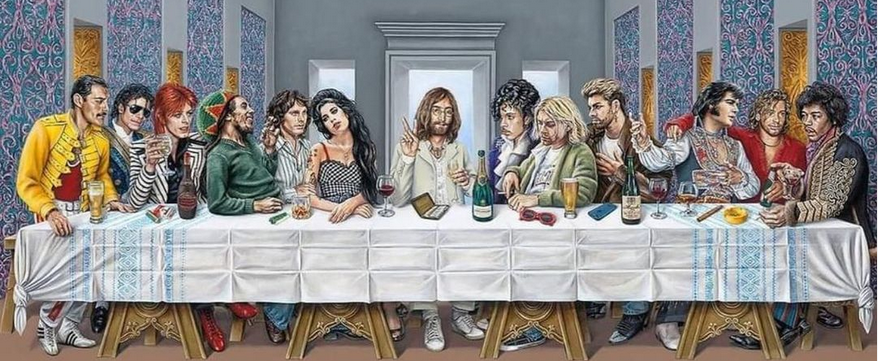
Sly Stone: The Funk Architect Who Changed Music Forever
Sly Stone, born Sylvester Stewart in Denton, Texas, on March 15, 1943, was a revolutionary figure in American music. Known primarily as the enigmatic frontman of Sly and the Family Stone, Stone’s impact on funk, soul, rock, and pop is almost incalculable. He was a prodigious musician, a boundary-pushing songwriter, and a deeply influential producer. His band’s music spoke to the soul of the civil rights era and laid the foundation for decades of genre-blending experimentation in popular music.
On June 9, 2025, Sly Stone passed away at the age of 82, leaving behind a legacy that spans decades and influences that permeate every corner of contemporary music. His life was marked by extraordinary artistic triumphs, personal turmoil, and ultimately, a recognition of his singular contributions to music history.
Early Life and Musical Roots
Sylvester Stewart was raised in a deeply religious household in Vallejo, California. The Stewart family was musical—singing gospel together as The Stewart Four—and Sly’s prodigious talents became evident early. By the time he was a teenager, he was proficient in several instruments including piano, guitar, bass, and drums.
In high school, he formed a doo-wop group called the Viscaynes, notable for its racial diversity, which would foreshadow the multiracial and genre-fusing future of Sly and the Family Stone. He went on to attend Vallejo Junior College, studying music and mastering the intricacies of theory and composition.
The mid-1960s saw Sly working as a DJ at KSOL, a San Francisco radio station. There, he became known for his eclectic musical taste, playing everything from rock and roll to R&B and gospel. Around this time, he also worked as a producer for Autumn Records, producing for artists like Grace Slick’s pre-Jefferson Airplane band, The Great Society, and even releasing solo singles under the name Sly Stone.
The Birth of Sly and the Family Stone
In 1966, Sly Stone brought together his musical and ideological vision by forming Sly and the Family Stone. The band was groundbreaking not only for its musical innovation but also for its makeup: racially integrated and gender-inclusive—a radical stance during the racially volatile 1960s.
The original lineup included his brother Freddie Stone on guitar, sister Rose Stone on keyboards and vocals, Larry Graham on bass, Cynthia Robinson on trumpet, Jerry Martini on saxophone, and Greg Errico on drums. Each member brought a unique musical sensibility, but it was Sly who synthesized their talents into a cohesive, genre-defying sound.
Their debut album, “A Whole New Thing” (1967), was a modest commercial success but already hinted at their innovative potential. It was their second album, “Dance to the Music” (1968), that broke them into the mainstream, featuring the title track that would become an anthem of joy and liberation.
The Peak: Musical and Cultural Impact
Sly and the Family Stone quickly became one of the most exciting acts in America. Their performances were electrifying, their fashion flamboyant, and their sound an infectious blend of funk, soul, rock, and psychedelia. The group’s message was one of unity and positivity—offering a hopeful vision during a time of deep social unrest.
Their 1969 album, “Stand!”, remains one of the most influential records of its era. Containing hits like “I Want to Take You Higher,” “Everyday People,” and “Sing a Simple Song,” it captured the spirit of the times while advancing a musical form that would eventually be labeled funk. The phrase “Different strokes for different folks,” from “Everyday People,” became a cultural catchphrase for tolerance and individuality.
Their appearance at Woodstock that same year was a defining moment. Performing in the early morning hours, the band delivered one of the festival’s most iconic sets, energizing a massive crowd with their raw power and jubilant calls for unity.
“There’s a Riot Goin’ On” and the Descent into Darkness
After a string of euphoric and uplifting albums, the tone shifted dramatically with the release of “There’s a Riot Goin’ On” (1971). Widely considered a masterpiece, the album reflected the political disillusionment and personal turmoil of the early 1970s. It featured the haunting hit “Family Affair”, a stark contrast to the upbeat anthems that had preceded it.
.
.
This album, built largely by Sly himself in isolation, signaled a descent into paranoia, drug addiction, and internal band conflict. The upbeat optimism of the Family Stone had curdled into something darker and more complex. Yet even in its bleakness, “There’s a Riot Goin’ On” is a brilliant, deeply textured work that influenced generations of musicians—from Prince to D’Angelo to Kendrick Lamar.
The Decline and Withdrawal from the Spotlight
Following “There’s a Riot Goin’ On,” the band’s cohesion began to unravel. Errico left in 1971, and Graham followed soon after, citing disagreements and safety concerns due to Stone’s increasingly erratic behavior and association with dangerous entourages.
Subsequent albums like “Fresh” (1973) and “Small Talk” (1974) still showcased flashes of brilliance, especially in tracks like “If You Want Me to Stay,” but the momentum was fading. Sly Stone attempted a solo career after disbanding the Family Stone in 1975, but his struggles with substance abuse and the law often overshadowed his music.
By the 1980s, Sly had largely disappeared from public view. He made sporadic appearances—most notably on tracks with George Clinton and Funkadelic—but lived much of his life in obscurity, even rumored at times to be homeless.
Legacy and Late Recognition
Despite his withdrawal from the music scene, Sly Stone’s influence only grew over time. Artists across genres cite him as a foundational figure: Prince, Stevie Wonder, Michael Jackson, Outkast, The Roots, Erykah Badu, and Bruno Mars, among countless others, have drawn from his musical innovations.
In 1993, Sly and the Family Stone were inducted into the Rock and Roll Hall of Fame, but Sly himself only made a brief appearance. In 2006, he gave a similarly fleeting performance at the Grammy Awards tribute to the band—his mohawk still defiant, his presence almost mythical.
Sly Stone‘s return to the spotlight was brief, and even in his later years, he struggled with addiction and health issues. In 2011, a Rolling Stone profile revealed that he was living in a van in Los Angeles, surviving on royalties and the kindness of fans.
Later Life and Death
In the final years of his life, there were signs of healing and retrospection. In 2023, Stone published a memoir, co-written with Ben Greenman, titled “Thank You (Falettinme Be Mice Elf Agin),” which offered a candid, poetic look at his life, genius, and regrets. The memoir was met with critical acclaim and reignited interest in his work.
Sly Stone died on June 9, 2025, in Los Angeles, at the age of 82. The cause of death was reported as complications from chronic respiratory and cardiovascular issues—health problems that had plagued him in recent years.
The Enduring Influence of Sly Stone
Sly Stone’s legacy is not confined to his hits or his revolutionary band. He changed the way music could be made—breaking down racial and gender barriers, fusing genres, and pushing sonic boundaries. He demonstrated that pop music could carry a radical message without losing its appeal, and that funk and soul could be vehicles for both celebration and critique.
.

.
His influence can be heard in the vocal arrangements of Earth, Wind & Fire, the political funk of Public Enemy, the neo-soul stylings of D’Angelo, and even in the eclectic sonic experimentation of contemporary artists like Tyler, The Creator.
Sly Stone’s legacy also lives on in the belief that music can be a unifying force. At a time when America was grappling with division and unrest, Sly and the Family Stone stood on stage—black and white, men and women, playing joyous, urgent music that demanded togetherness. That message is as relevant now as it was then.
Conclusion
Sly Stone was a visionary, a revolutionary, and a tragic genius. His music brought people together, even as his personal life fell apart. He created a new language for funk and helped shape the soundtrack of a transformative era in American history.
Though he spent much of his later life out of the spotlight, Sly Stone’s work continues to speak loudly, clearly, and soulfully to each new generation. His death marked the end of a chapter in American music, but his songs—still funky, still profound, still joyful—ensure that his spirit lives on.
As he once said, “Thank you for lettin’ me be myself again.” And the world is all the better for it.
Check out Sly Stone on Amazon by clicking here.
If you found this interesting please share it with your friends and family, and check out some of our other articles on Musicians who Died in 2025.
.

